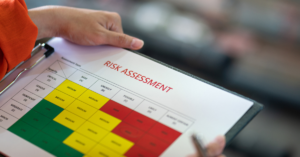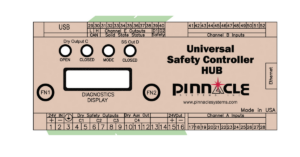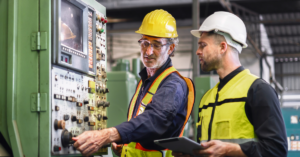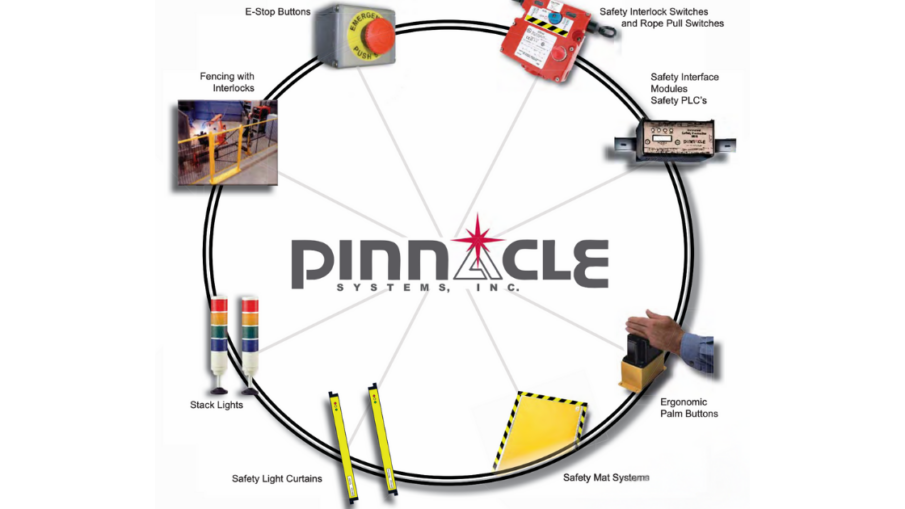Ensuring worker safety in industrial environments begins with properly installing machine guarding safety devices. From safety light curtains to interlock switches, these devices protect workers by restricting access to hazardous areas and stopping equipment during emergencies. However, even with the right devices, improper installation can leave workers at risk and facilities out of compliance.
This guide explores 10 common mistakes made during the installation of machine guarding safety devices and provides actionable solutions to avoid them. By addressing these challenges, you can maximize safety, maintain compliance, and improve operational efficiency.
What Are Machine Guarding Safety Devices?
Machine guarding safety devices are systems designed to protect workers from injuries caused by hazardous machinery. These devices prevent accidents by detecting unsafe conditions, restricting access to dangerous areas, or stopping machinery when necessary.
Examples of Safety Devices:
- Safety light curtains: Create invisible barriers to stop machines when breached.
- Safety mats: Trigger machine shutdowns when stepped on.
- Interlock switches: Prevent machines from operating when access gates are open.
Key Benefits of Proper Installation:
- Worker Safety: Reduces the risk of injuries from hazardous equipment.
- Regulatory Compliance: Ensures adherence to OSHA and ISO standards.
- Increased Productivity: Prevents downtime caused by accidents or system failures.
1. Failing to Conduct a Comprehensive Risk Assessment

Skipping a risk assessment is one of the most common mistakes when installing machine guarding safety devices. Without a clear understanding of hazards, facilities may leave critical areas unprotected.
Why Risk Assessments Are Critical:
- Identify specific hazards, such as pinch points, crushing zones, or high-speed machinery.
- Determine the most effective safety devices for each application.
How to Perform a Risk Assessment:
- Evaluate all machinery and workflows to identify potential hazards.
- Map out danger zones requiring protection.
- Choose safety devices that address specific risks, such as light curtains for robotic arms or mats for conveyors.
2. Incorrect Positioning of Safety Devices
Safety devices are only effective if placed correctly. Poor placement can create gaps in protection, allowing workers to access hazardous areas before machines stop.
Common Positioning Errors:
- Installing safety light curtains too far from danger zones.
- Placing safety mats outside critical work areas.
Example: A robotic welding station with light curtains placed three feet away from the danger zone might allow workers to reach moving parts before the system stops.
Solution: Follow manufacturer guidelines to ensure proper positioning. For example, light curtains should be installed close enough to the hazard to trigger a stop before contact occurs.
3. Neglecting Post-Installation Testing
Even if safety devices are installed correctly, failing to test them can lead to system failures when needed most.
Importance of Testing:
- Verifies that devices function as intended.
- Identifies installation issues, such as wiring errors or misaligned sensors.
Solution:
- Test all safety devices immediately after installation.
- Perform periodic testing to confirm continued functionality.
4. Not Integrating Devices with Programmable Safety Controllers

Safety devices should work together as part of an integrated system. Installing standalone devices without connecting them to a programmable safety controller (PSC) limits their effectiveness.
Benefits of PSC Integration:
- Centralizes control of all safety devices.
- Automates responses to detected hazards.
- Enables real-time monitoring and diagnostics.
Example: A PSC can connect safety mats, light curtains, and interlock switches in a robotic work cell, ensuring synchronized safety responses.
5. Using Incompatible or Outdated Components
Mismatched safety components can result in malfunctions or reduced system reliability.
Common Issues:
- Pairing old controllers with modern safety devices.
- Using non-compliant components that fail to meet regulatory standards.
Solution:
- Verify compatibility before purchasing safety devices.
- Upgrade legacy systems to meet current safety requirements.
6. Ignoring Environmental Conditions
Industrial environments often involve heat, moisture, chemicals, or dust that can damage improperly selected safety devices.
Examples of Environmental Considerations:
- Chemical Exposure: Standard safety mats may corrode in environments with frequent chemical spills.
- High Temperatures: Devices near welding stations require heat resistance.
Solution: Choose safety devices specifically designed for your facility’s conditions, such as chemical-resistant mats or waterproof light curtains.
7. Neglecting Routine Maintenance
Over time, safety devices can wear down or become misaligned, reducing their effectiveness.
Consequences of Poor Maintenance:
- Worn safety mats may fail to detect foot traffic.
- Misaligned light curtains may allow unprotected access.
Solution:
- Develop a maintenance schedule for regular inspections.
- Replace worn or damaged components promptly.
Regular maintenance and inspections are crucial for machine safety. Utilize OSHA’s comprehensive Machine Guarding Checklist to ensure all safety measures are in place.
8. Failing to Train Workers on Safety Devices

Even the best safety devices are ineffective if workers don’t understand their purpose or how to use them.
Key Training Topics:
- Proper use of emergency stops.
- Understanding how safety devices protect them.
- Avoiding behaviors that bypass safety measures.
Solution: Conduct regular training sessions for all employees, emphasizing the importance of safety devices and protocols. Proper training is essential for effective machine safety. The CDC provides valuable insights on Machine Safety in the Workplace to guide your training programs.
9. Designing Systems Without Scalability in Mind
Failing to account for future expansions can result in costly upgrades.
Example:
A factory installs a safety controller that cannot accommodate additional devices needed for new machinery.
Solution: Choose scalable safety systems that can grow with your facility’s needs.
10. Misinterpreting Regulatory Requirements
Compliance with safety standards like OSHA Machine Guarding Standards and ISO 13849 is non-negotiable. Misinterpreting these standards can lead to fines and safety violations.
Common Mistakes:
- Assuming all devices meet compliance standards without verification.
- Overlooking specific regulations for unique industries.
Solution: Work with certified safety professionals to ensure all installations meet regulatory requirements.
Additional Tips for Effective Machine Guarding
1. Create a Clear Safety Plan
Develop a detailed safety plan outlining the location and function of all guarding devices.
2. Perform Regular Audits
Conduct safety audits to identify potential gaps in protection and verify compliance.
3. Stay Updated on Regulations
Monitor changes to safety standards and adjust systems as needed.
Expanding Your Facility’s Safety Capabilities
Proper installation and maintenance of machine guarding safety devices protect workers, reduce downtime, and ensure compliance with regulations. By avoiding common mistakes and following best practices, facilities can create safer, more efficient environments.
For more information on safety light curtains, safety mats, and other guarding solutions, explore Pinnacle Systems’ product offerings.

